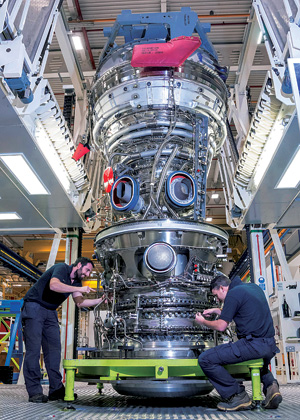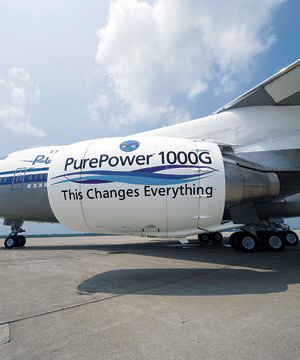INDIAN ARMED FORCES CHIEFS ON OUR RELENTLESS AND FOCUSED PUBLISHING EFFORTS

The insightful articles, inspiring narrations and analytical perspectives presented by the Editorial Team, establish an alluring connect with the reader. My compliments and best wishes to SP Guide Publications.

"Over the past 60 years, the growth of SP Guide Publications has mirrored the rising stature of Indian Navy. Its well-researched and informative magazines on Defence and Aerospace sector have served to shape an educated opinion of our military personnel, policy makers and the public alike. I wish SP's Publication team continued success, fair winds and following seas in all future endeavour!"

Since, its inception in 1964, SP Guide Publications has consistently demonstrated commitment to high-quality journalism in the aerospace and defence sectors, earning a well-deserved reputation as Asia's largest media house in this domain. I wish SP Guide Publications continued success in its pursuit of excellence.
- The layered Air Defence systems that worked superbly, the key element of Operation Sindoor
- Operation Sindoor | Day 2 DGMOs Briefing
- Operation Sindoor: Resolute yet Restrained
- India's Operation Sindoor Sends a Clear Message to Terror and the World – ‘ZERO TOLERANCE’
- Japan and India set forth a defence cooperation consultancy framework, talks on tank and jet engines
Environment Friendly
CFM International, Pratt & Whitney, Rolls-Royce and others too are continuously working on improving not only engine efficiency, but also taking into consideration its environmental footprint

Aircraft engines produce emissions that are similar to other emissions resulting from fossil fuel combustion. However, aircraft emissions are unusual in that a significant proportion is emitted at altitude. These emissions give rise to serious environmental concerns regarding their global impact and their effect on local air quality at ground level. A comprehensive assessment concerning aviation’s contribution to global atmospheric problems is contained in the Special Report on Aviation and the Global Atmosphere which was prepared at the International Civil Aviation Organisation’s (ICAO) request by the Intergovernmental Panel on Climate Change (IPCC) in collaboration with the Scientific Assessment Panel to the Montreal Protocol on Substances that Deplete the Ozone Layer and was published in 1999.
The report among other things mentioned:
- That aircraft emit gases and particles which alter the atmospheric concentration of greenhouse gases, trigger the formation of condensation trails and may increase cirrus cloudiness, all of which contribute to climate change.
- That aircraft are estimated to contribute about 3.5 per cent of the total radiative forcing (a measure of change in climate) by all human activities and that this percentage, which excludes the effects of possible changes in cirrus clouds, was projected to grow.
The report recognised that the effects of some types of aircraft emissions are well understood and revealed that the effects of others are not. It identified a number of key areas of scientific uncertainty that limit the ability to project aviation impacts on climate and ozone.
Against this background, the ICAO Assembly in 2001 urged nations to promote scientific research aimed at addressing the uncertainties identified in this report and requested the council to continue to cooperate closely with the IPCC and other organisations involved in the definition of aviation’s contribution to environmental problems in the atmosphere and the need to take initiatives for a scientific understanding of the problems. This was reiterated by the Assembly in 2007. ICAO requested the IPCC to include an update of the main findings of the 1999 report in its Fourth Assessment Report (IPCC AR4) published in 2007.
The new findings related to aviation emissions in IPCC AR4 are inter alia:
- Due to developing scientific knowledge and more recent data estimates of the climate effects of contrails have been lowered and aircraft in 2005 are now estimated to contribute about three per cent of the total of the anthropogenic radiative forcing by all human activities.
- Total CO2 aviation emissions is approximately two per cent of the global greenhouse emissions.
- The amount of CO2 emissions from aviation is expected to grow at around three to four per cent per year.
- Medium-term mitigation for CO2 emissions from the aviation sector can potentially come from improved fuel efficiency.
WITH FUEL COSTS ACCOUNTING FOR A LARGER PART OF SINGLE-AISLE AIRCRAFT OPERATING COSTS, IT IS NO SURPRISE AIRLINES ARE ADDING MORE FUEL-EFFICIENT AIRCRAFT TO THEIR FLEETS
However, such improvements are expected to only partially offset the growth of CO2 aviation emissions. In the past, ICAO’s policy-making to address the environmental impact of aircraft engine emissions focused primarily on the ground level effects. In recent years, the scope has been expanded to include the global impact of aircraft engine emissions.
Engine Makers in Sync with Environment Concerns
Accordingly, aero-engine makers are factoring these aspects to reduce the impact of engines on environment. CFM International with its LEAP engine; Pratt & Whitney with its PurePower engine; Rolls-Royce with its Trent engine and others too are continuously working on improving not only engine efficiency, but also taking into consideration its environmental footprint.
CFM’s LEAP Leads the Way
Although air travel remains one of the most environmentally efficient modes of travel as measured by passenger miles per gallon of fuel, there are many environmental challenges in developing new engines. Emissions of CO2 and NOx and aircraft noise must be reduced to meet the world’s expectation for constant improvement in these areas. CFM International’s LEAP engine will meet those expectations by delivering 15 per cent lower CO2 emissions, 50 per cent lower NOx emissions and a 75 per cent reduction in the noise footprint.
With fuel costs accounting for a larger part of single-aisle aircraft operating costs, it is no surprise airlines are adding more fuel-efficient aircraft to their fleets. CFM’s all-new LEAP engine will improve fuel efficiency 15 per cent over current engines. LEAP’s high bypass ratio architecture, lightweight composite fan blades and case, advanced 3D aerodynamic airfoils, debris rejection system, compressor efficiency and high thermal efficiency turbine materials are products of CFM’s proven technology experience and new technology development.


Pratt & Whitney’s PurePower Advantage
With 20 years of research and development, component rig testing on all major modules, extensive ground and flight testing of full-scale demonstrator engine complete and extensive ground and flight testing of its first two engine series well underway, the PurePower PW1000G engine with Geared Turbofan technology delivers game-changing reductions in fuel burn, environmental emissions, engine noise and operating costs.
In the PurePower PW1000G engine family, a state-of-theart gear system separates the engine fan from the low pressure compressor and turbine, allowing each of the modules to operate at their optimum speeds. This enables the fan to rotate slower and while the low pressure compressor and turbine operate at a high speed, increasing engine efficiency and delivering significantly lower fuel consumption, emissions and noise. This increased efficiency also translates to fewer engine stages and parts for lower weight and reduced maintenance costs.
In cooperation with parent company United Technologies Corporation (UTC), Pratt & Whitney sets aggressive EH&S goals that are continually met and exceeded. In 2007, UTC embarked on a four-year programme to reduce greenhouse gas emissions by 12 per cent, water consumption by 10 per cent, air emissions by 20 per cent and non-recyclable waste by 30 per cent compared with 2006. These metrics are not normalised for business volumes that are growing, meaning that the per-product emissions will be dropping even more.
Pratt & Whitney’s greenhouse gas reduction target is equivalent to taking more than 16,000 cars off the road. In the first two years of the programme, Pratt & Whitney has reduced greenhouse gas emissions by 11 per cent, water usage by 13 per cent, air emissions by 49 per cent, and non-recyclable waste by four per cent. Pratt & Whitney is doing its part to reduce the human impact on climate change by providing customers with the most environmentally-responsible products, services and operations simultaneously reducing greenhouse gas emissions globally.
Rolls-Royce Trent is Trending
Rolls-Royce is at the forefront of aero-engine design. The Trent XWB, the sole power plant for the Airbus A350 XWB, is the world’s most efficient large aero-engine. It’s the latest in Rolls-Royce’s Trent engine series which has involved Loughborough in a research partnership lasting over 20 years.
Loughborough’s aeronautical engineers have helped Rolls-Royce develop patented technology making their fleet of engines increasingly more fuel efficient and reducing their environmental impact. The work and technology transfer has been driven by the Loughborough-based Rolls-Royce University Technology Centre in Combustion System Aerothermal Processes.
The Loughborough team established novel ways to study complex flow physics, developed test methods used to support the Rolls-Royce engine design processes, and contributed analysis and fundamental understanding to guide engine concepts. The resulting knowledge is used by Rolls-Royce to enhance the performance of its whole large and small engine portfolio.
The latest Loughborough developments have been incorporated into the Trent XWB. Work on this engine started in 2005, with Rolls-Royce carrying out flight tests which began in 2013. It is now the world’s fastest selling wide-body airliner, with more than 1,500 XWB engines sold in 31 countries across every continent.
Rolls-Royce and Loughborough University continue to work together to improve aero-engine efficiencies reducing fuel burn and environmental impact, whilst maintaining world-class levels of reliability and cost of ownership.
Loughborough research has contributed five Trent engine variants, operating on more than 900 aircraft. The latest, the Trent XWB, has a 10 per cent fuel burn advantage over the engines it is designed to replace. It is estimated that the Trent XWB will save customers around $2.5 million per aircraft per year in fuel costs alone.
The engine manufacturers in particular and the aviation industry in general understand environmental concerns and are continuously looking at collaborative efforts with universities, industry organisations and experts to further improvements in engine technology and in turn work towards sustainable aviation sector.





